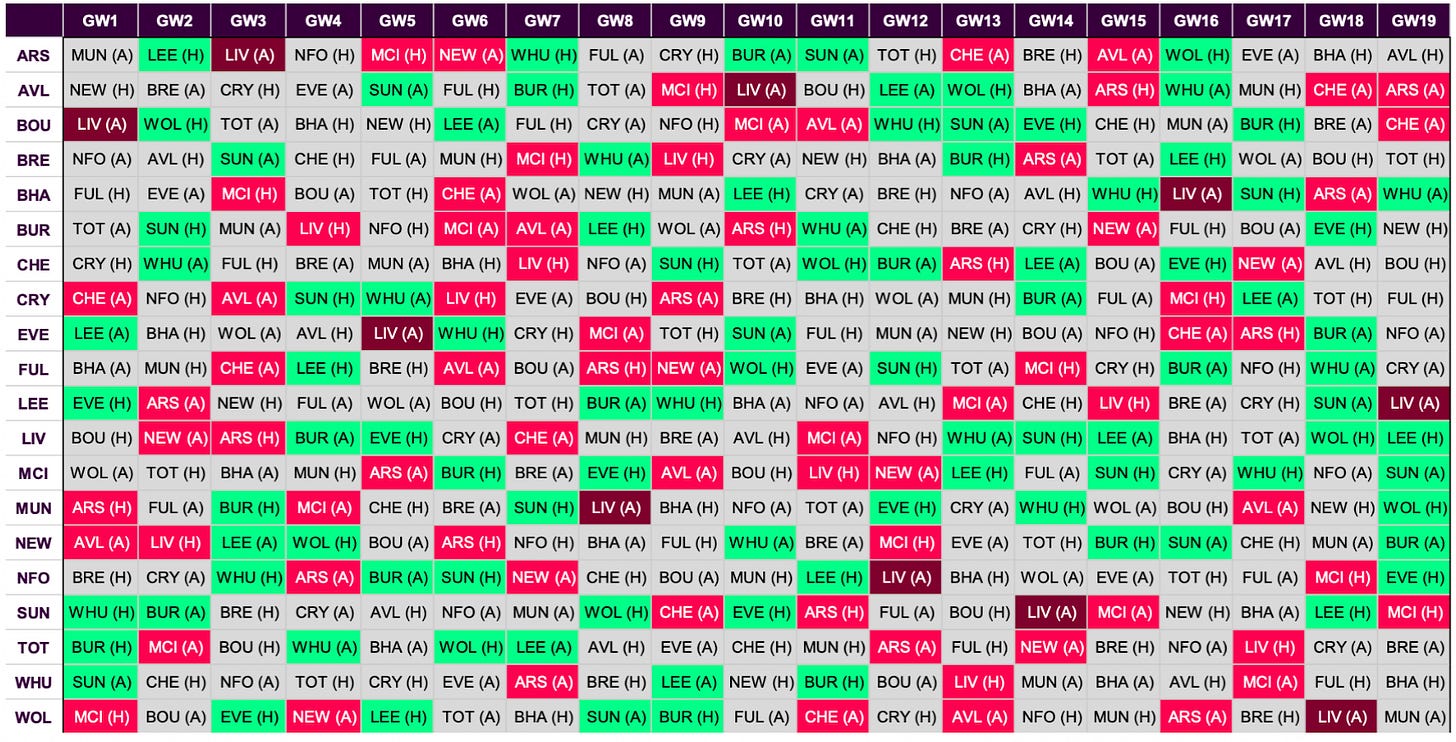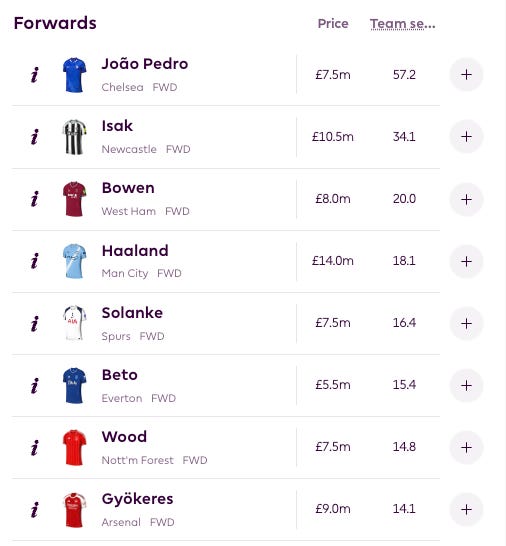FPL fixture analysis: Should we approach them differently?
Good old fixture analysis. Or not?
Saying there are many novelties in the upcoming season’s FPL is an understatement.
The one that steals the show in pre-season content across all the websites, social media posts, and YouTube is the introduction of defensive contributions.
And for a good reason, as it has a significant impact on our team selection.
I have already discussed all the crucial changes and their potential impact on our strategy.
However, the sharper-eyed among you have probably noticed one traditional topic isn’t getting much buzz.
It’s the fixtures ❗
There are multiple reasons for that.
Firstly, they are quite difficult to interpret this season. There aren’t many standout runs to target, and if you really want to gain an edge, you need to dig much deeper:
Analyse all the arrivals and departures and how they influence the team’s strength
Use some stylistic data from the previous season
Utilise more traditional metrics, but emphasise their context heavily (that’s what most of the FDRs on the internet lack)
There are still many moving parts at the moment, but I’m sure I will revisit this topic closer to the end of the pre-season when we have more information.
Secondly, defensive contributions (this again?) altered the way you interpret fixtures from a defensive perspective. More on that later.
Nevertheless, we still need to get a feel for the fixtures before we begin experimenting with drafts and trying different selections, structures, and strategies.
Offence: Which teams should we target?
While the methodology for evaluating fixtures remains largely unchanged, I believe the thought process has evolved slightly. Last season, it was all right to focus on a shorter span of fixtures, say GW1 to 8, and be aware of the first major fixture swing. Then, as the season went on, you’d work out the rest.
This season, things are a bit more complicated.
Only a few standout runs → You might think more about rotating players (a deeper bench has its merits)
Three more chips to play up until GW19 → You can manipulate your GW1 selection around them—especially Free Hit, as one of the most valuable chips.
It’s also worth noting that Gameweek 13 marks a major fixture swing for Manchester City, Liverpool, and Newcastle—all of these teams have pretty uninspiring fixture runs at the beginning of the season.
There are also favourable post-GW13 runs for Crystal Palace, who performed well offensively in the second part of the last season, as well as for Bournemouth and Manchester United, where several promising picks could quickly emerge.
The GW13 wildcard strategy is gaining popularity among content creators, and I don’t mind it, though I’m not saying you have to follow it—anywhere from GWs 7 to 19 could work fine, really.
However, given the not-so-great opening fixtures, I believe it’s wise to evaluate the period from Gameweeks 1 to 12 for this article.
Forgive me for this lengthy and somewhat abstract introduction, but I feel it’s essential for the analysis that follows. So, let’s move on to some insights about specific teams.
Chelsea
They are probably the most hyped team in pre-season fixture discussions.
Not only that, João Pedro remains the most selected player in the game, which further highlights the excitement surrounding them. I wonder how things would look if there were no Club World Cup finals.
Fixtures look decent, and I’m quite likely to start the season with Cole Palmer. However, as for others, the situation isn’t that definite.
As for the other attacking players, it’s mostly a wait-and-see approach, both in terms of xMins and their final output. Their wingers are rather creators, so I’m curious about their goal threat.
However, I suspect they will be strong defensively, so it’s more than fine to look at some of their DEF assets.
Manchester City
What puts me off is the uncertainty around minutes.
Currently, I can’t easily predict how they will line up, as there are many different alternatives. There’s only Erling Haaland who’s safe from the rotation. At least you would expect that.
One of the routes is to start without them, then use Free Hit in GW6 to extract the value from the home game against Burnley, and then decide whether you will gradually introduce them into your team after GW6, or wait a bit longer to fully open the floodgates in Gameweek 13 (LEE, ful, SUN, cry, WHU, nfo, sun).
Aston Villa
One of the best sets of fixtures out there.
Not quite enough to try some wild experiments, but the usual suspects like Ollie Watkins (£9.0m) and Morgan Rogers (£7.0m) are decent picks if you’re happy to pay for them.
I suspect that if fixtures had been worse at the beginning of the season, both would be £0.5m cheaper. For some, the high price might be a barrier—Watkins is only 10% owned as I write this.
It’s the price you need to pay to secure consistent returns, which I think will come. So, it’s mainly about the structure of your team.
Keep reading with a 7-day free trial
Subscribe to Data Dribble to keep reading this post and get 7 days of free access to the full post archives.






